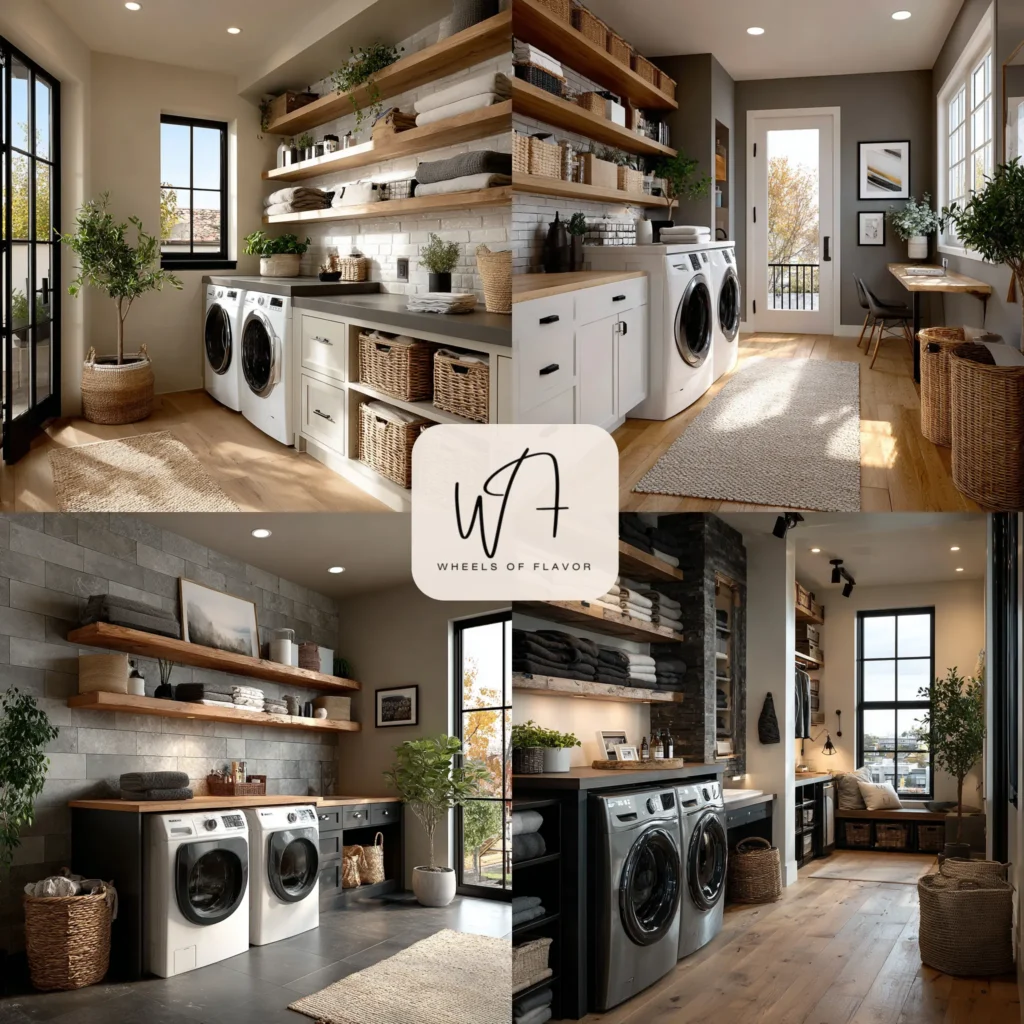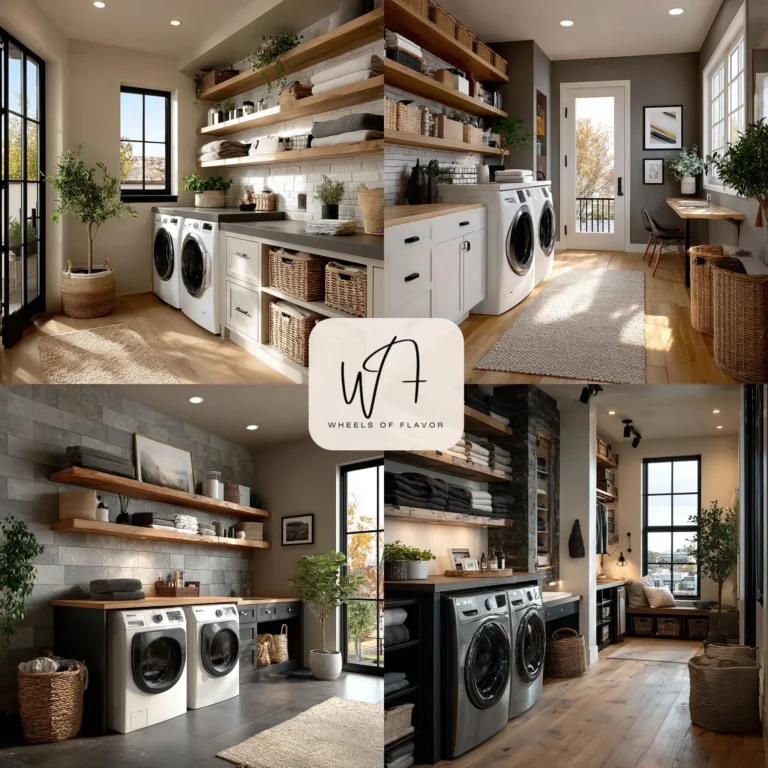Insulating a laundry room is a game-changer for homeowners looking to enhance energy efficiency, reduce noise, and create a more comfortable space. Whether you’re dealing with a chilly laundry area in winter or a space that’s too warm in summer, proper insulation can make all the difference. This article explores four powerful strategies to insulate your laundry room effectively, ensuring a cozy and cost-effective environment. From choosing the right materials to sealing gaps, we’ve got you covered with practical tips to transform your laundry space.
Table of Contents
Why Insulating a Laundry Room Matters
A laundry room is often an overlooked space when it comes to home insulation, yet it’s one of the most important areas to address. Laundry rooms are typically exposed to temperature fluctuations, moisture, and noise from appliances like washers and dryers. Without proper insulation, you may face higher energy bills, uncomfortable working conditions, and even potential damage to your home. Insulating a laundry room helps regulate temperature, reduce noise, and protect your home from moisture-related issues like mold.
According to the U.S. Department of Energy, proper insulation can reduce heating and cooling costs by up to 20%. By focusing on insulating your laundry room, you’re not only improving comfort but also making a smart investment in your home’s efficiency. Let’s dive into the four essential tips to get started.
Choose the Right Insulation Materials for Your Laundry Room
When insulating a laundry room, selecting the right materials is crucial for achieving optimal results. The best insulation materials depend on your laundry room’s location, whether it’s in a basement, garage, or interior space. Here are some popular options:
- Fiberglass Batts: Affordable and easy to install, fiberglass batts are ideal for walls and ceilings. They offer excellent thermal resistance but require proper sealing to prevent moisture buildup.
- Spray Foam: Perfect for sealing gaps and irregular spaces, spray foam provides superior insulation and air sealing. It’s more expensive but highly effective in laundry rooms with exposed pipes or ductwork.
- Rigid Foam Boards: These are great for basement or exterior walls, offering high insulation value and moisture resistance.
- Reflective Insulation: Useful for laundry rooms in hot climates, reflective insulation helps deflect heat away from the space.
When choosing materials, consider the R-value, which measures insulation’s ability to resist heat flow. For laundry rooms, aim for an R-value of at least R-13 for walls and R-30 for ceilings, depending on your climate. Always wear protective gear when handling insulation materials to avoid skin irritation or respiratory issues.
For more inspiration on home improvement projects, check out our Styles and Trends section for creative ideas to enhance your living spaces.
Seal Gaps and Cracks for Maximum Efficiency
One of the most critical steps in insulating a laundry room is sealing gaps and cracks to prevent air leaks. Even the best insulation materials won’t perform well if cold or warm air is escaping through gaps around windows, doors, or pipes. Use caulk or weatherstripping to seal these areas effectively.
Start by inspecting your laundry room for common problem areas:
- Windows and Doors: Apply weatherstripping around window and door frames to block drafts.
- Pipes and Vents: Use spray foam or caulk to seal gaps where pipes or vents enter the room.
- Electrical Outlets: Install foam gaskets behind outlet covers to prevent air leaks.
Sealing gaps not only improves insulation but also reduces the workload on your heating and cooling systems. For a detailed guide on sealing air leaks, check out this comprehensive resource from the U.S. Department of Energy.

Insulate Pipes and Ducts to Prevent Heat Loss
Laundry rooms often contain exposed pipes and ductwork, which can contribute to heat loss or gain. Insulating these components is a simple yet effective way to improve energy efficiency. Pipe insulation, available in foam or fiberglass sleeves, prevents heat loss from hot water pipes and protects cold water pipes from freezing in colder climates.
For ductwork, use foil-faced insulation or duct wrap to minimize heat transfer. This is especially important if your laundry room is in a basement or garage, where ducts may be exposed to unconditioned air. Insulating pipes and ducts can also reduce condensation, preventing moisture-related issues like mold or mildew.
When insulating pipes, ensure a snug fit and secure the insulation with tape to avoid gaps. For ducts, wrap the insulation tightly and seal seams with foil tape for maximum efficiency. These steps will keep your laundry room comfortable and protect your plumbing system.
Add Soundproofing for a Quieter Laundry Room
In addition to thermal insulation, consider soundproofing your laundry room to reduce noise from appliances. Washers and dryers can be loud, especially in small or poorly insulated spaces. Soundproofing not only improves comfort but also adds value to your home by creating a quieter environment.
To soundproof your laundry room:
- Use Acoustic Panels: Install foam or fabric panels on walls to absorb sound vibrations.
- Add Weatherstripping: Applying weatherstripping to doors can reduce noise leakage to other rooms.
- Install a Solid-Core Door: Replace hollow doors with solid-core ones to block sound more effectively.
For more advanced soundproofing, consider adding a layer of mass-loaded vinyl (MLV) beneath drywall. This material is highly effective at reducing noise transmission. Insulating a laundry room with soundproofing in mind creates a more pleasant space for household chores and minimizes disruptions in adjacent rooms.
Additional Tips for Insulating a Laundry Room
Beyond the core strategies, here are a few extra tips to enhance your laundry room insulation project:
- Ventilation: Ensure proper ventilation to prevent moisture buildup, especially in rooms with dryers. Use an exhaust fan or ensure the dryer vent is properly sealed and directed outside.
- Floor Insulation: If your laundry room is above an unheated space like a garage, consider adding insulation beneath the floor to prevent heat loss.
- Energy-Efficient Appliances: Pair your insulation efforts with energy-efficient washers and dryers to maximize savings. Look for ENERGY STAR-certified models for the best performance.
By combining these strategies, you’ll create a laundry room that’s not only energy-efficient but also comfortable and quiet. For more home improvement ideas, explore our Styles and Trends category for tips on modernizing your home.
FAQs About Insulating a Laundry Room
Q: Why is insulating a laundry room important?
A: Insulating a laundry room improves energy efficiency, reduces noise from appliances, and maintains a comfortable temperature. It also helps prevent moisture-related issues like mold.
Q: What is the best insulation material for a laundry room?
A: The best material depends on your needs. Fiberglass batts are cost-effective, while spray foam is ideal for sealing gaps. Rigid foam boards work well for basements, and reflective insulation suits hot climates.
Q: How can I reduce noise in my laundry room?
A: Use acoustic panels, weatherstripping, or a solid-core door to minimize noise. Adding mass-loaded vinyl beneath drywall can also help with soundproofing.
Q: Can I insulate a laundry room myself?
A: Yes, many insulation projects, like installing fiberglass batts or pipe insulation, are DIY-friendly. However, for complex tasks like spray foam application, consider hiring a professional for safety and effectiveness.

